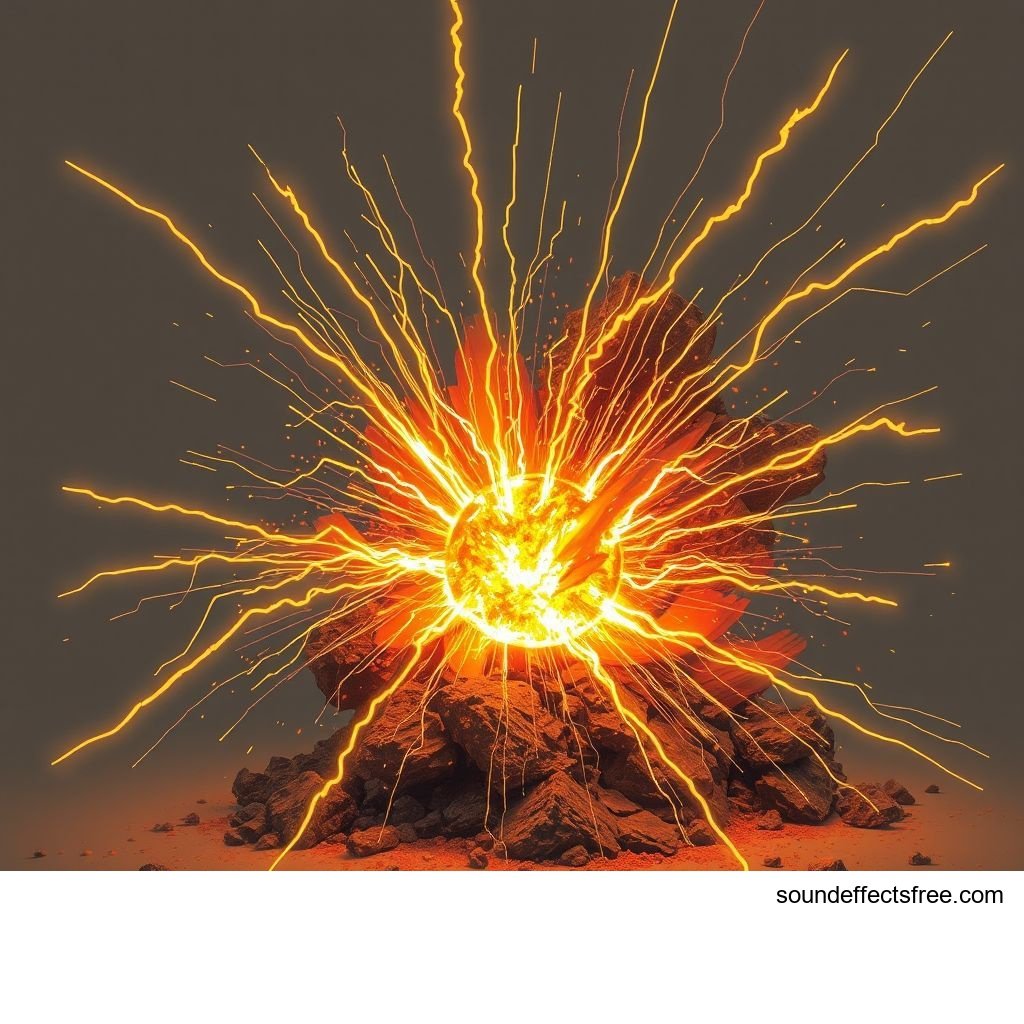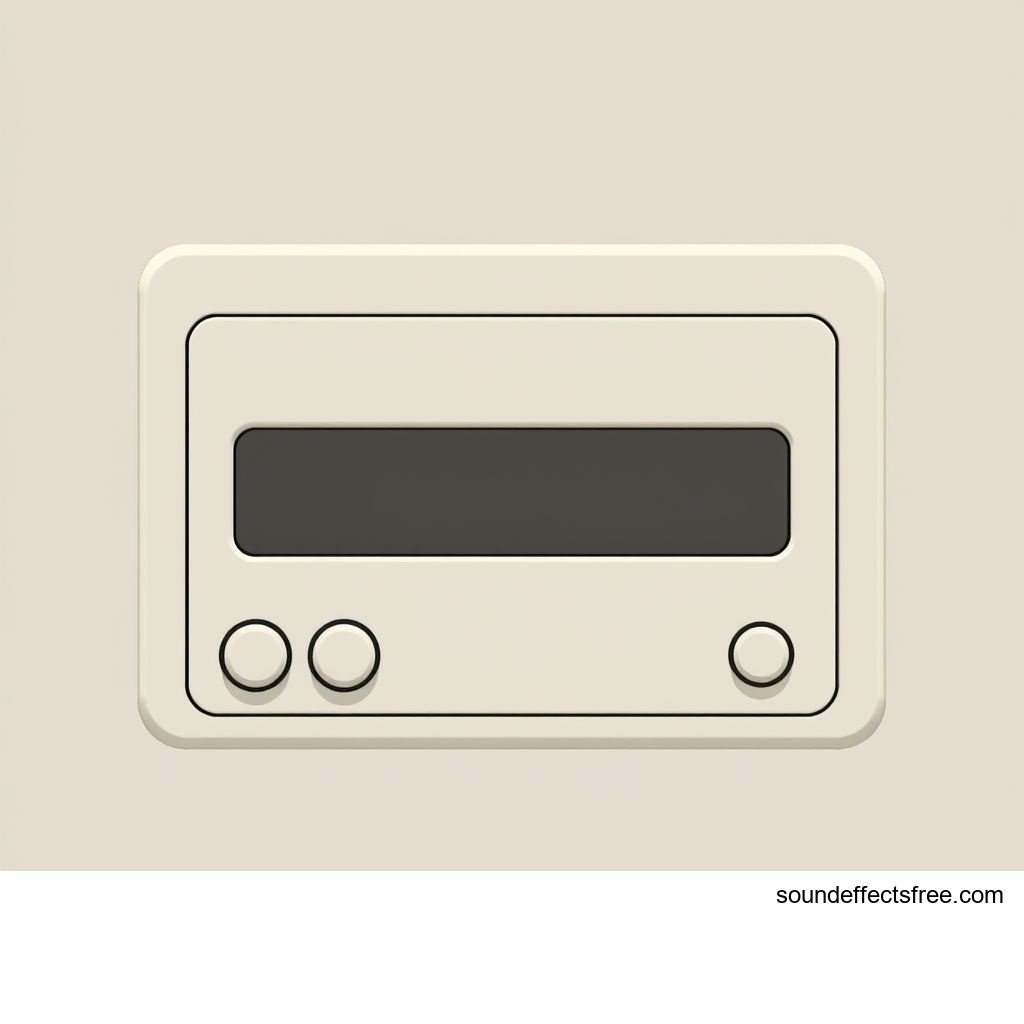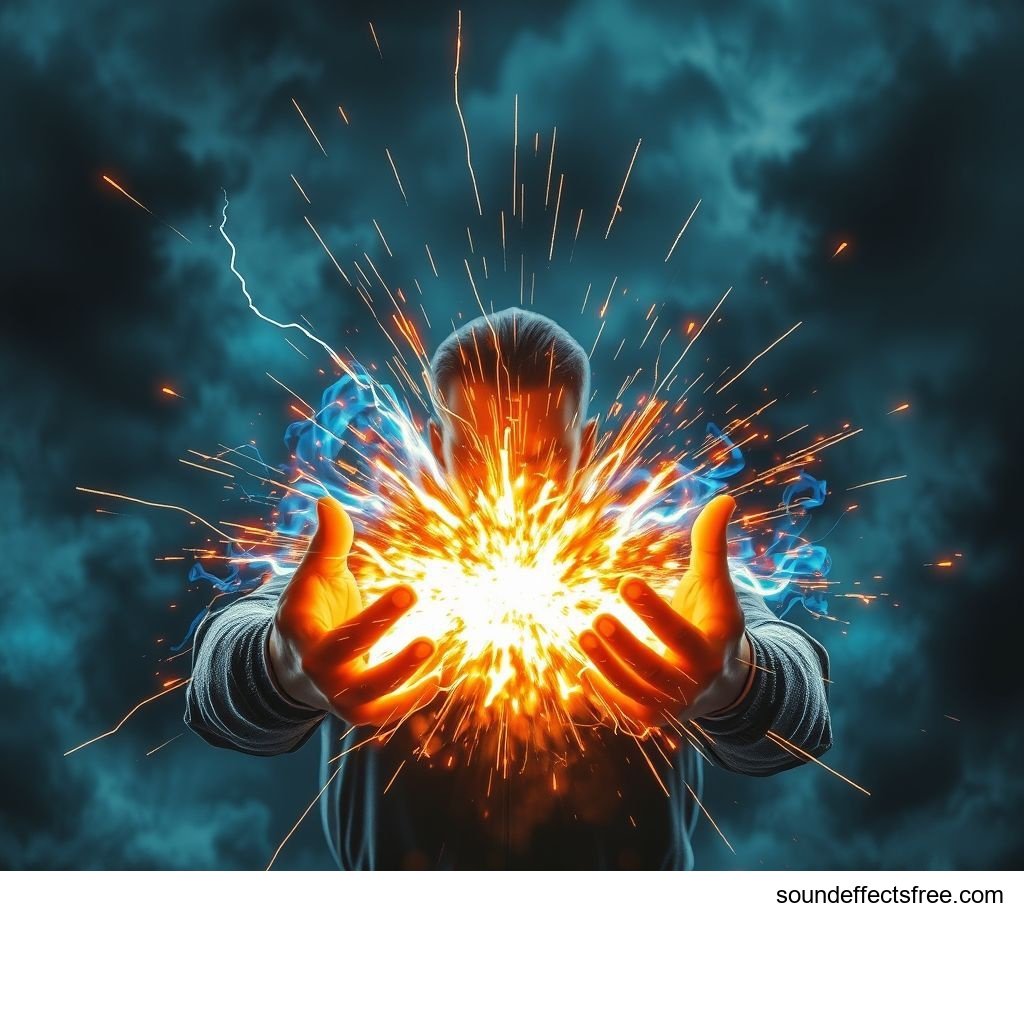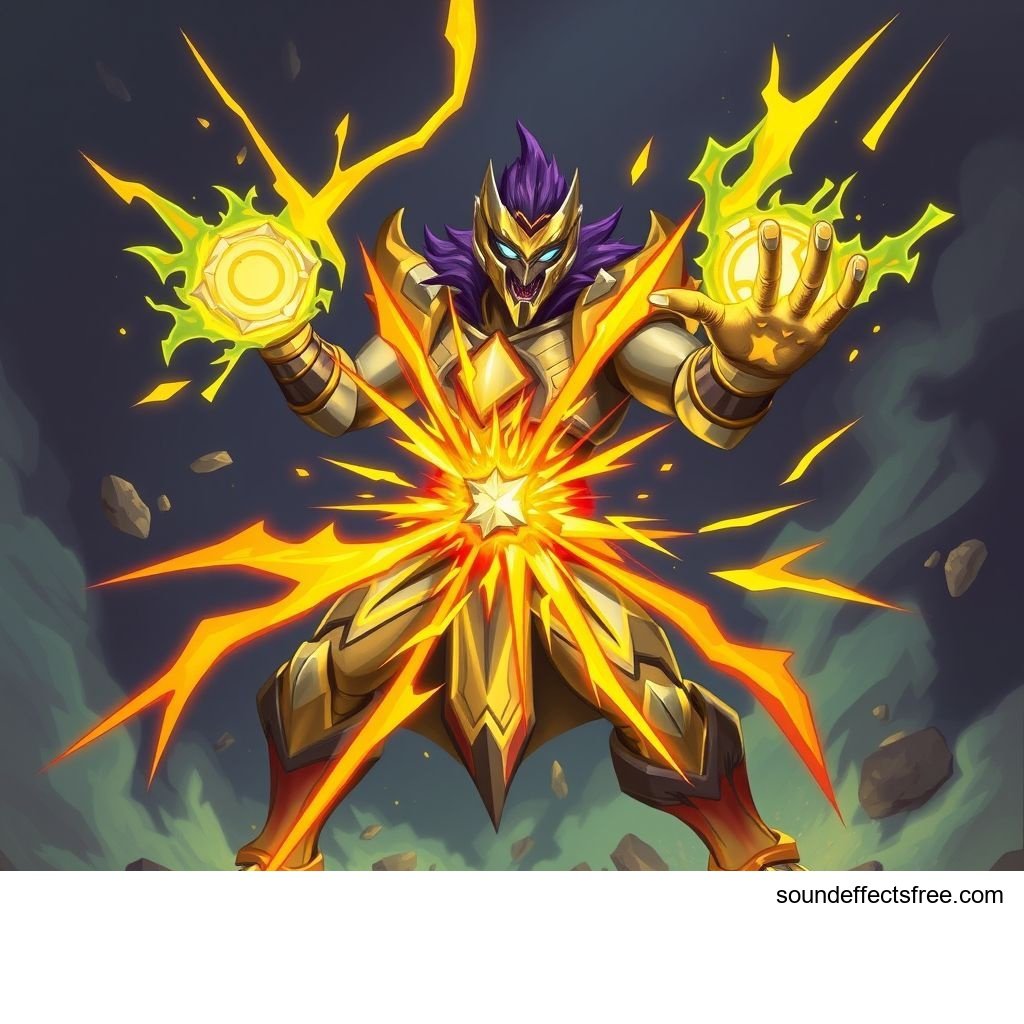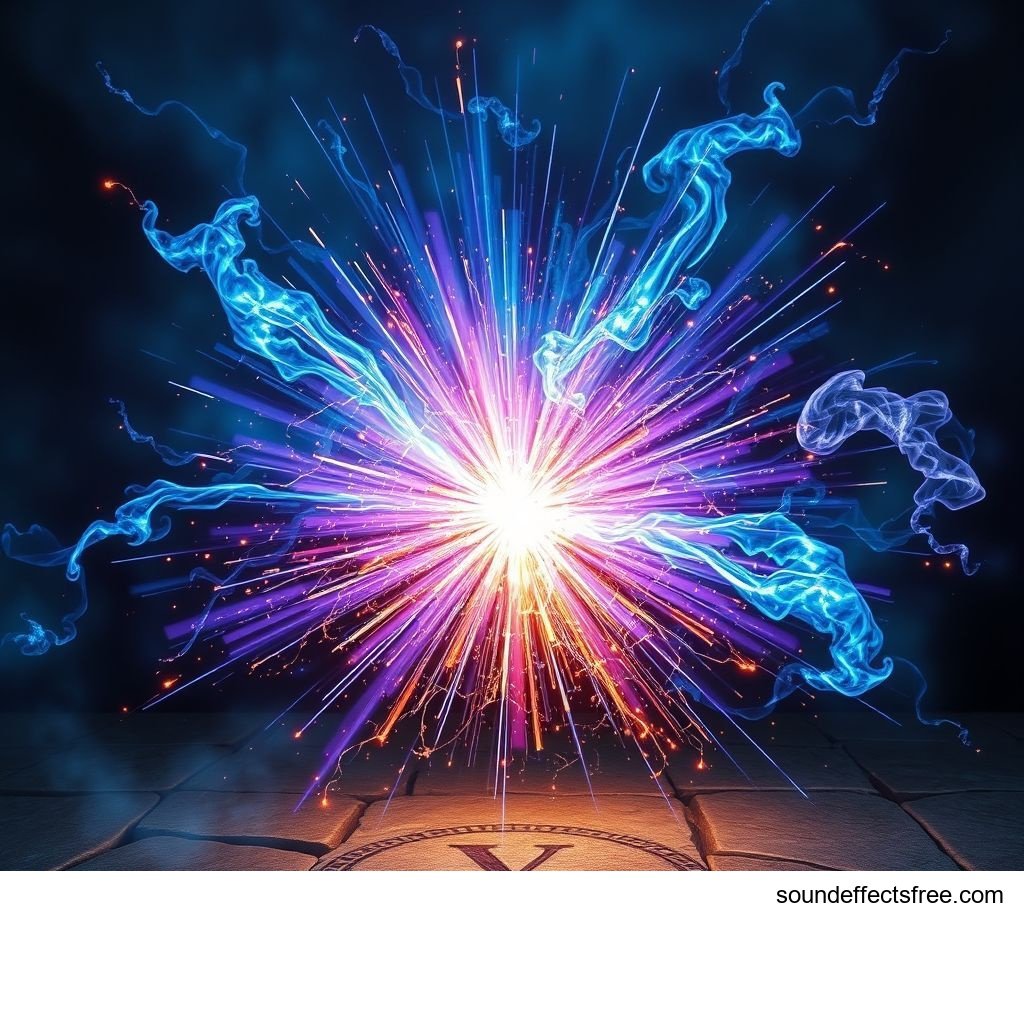Concussive Energy Discharge
Concussive Energy: Crafting Powerful Sound Effects
Master concussive energy sound effects. Learn techniques for high-impact audio, mix clarity, and powerful energy blast creation. Elevate your sound design with explosive energy.
Creating powerful sound effects requires an understanding of raw energy. Concussive energy discharge sounds are vital in media. They convey immense power. This guide explores crafting these essential audio effects. We will cover techniques for maximum impact. Learn to achieve clarity in any mix. Master the art of powerful energy sfx.
Applications in Media
Concussive energy sounds are everywhere. They define key moments. Their use spans many media types. These audio effects provide crucial feedback. They communicate power effectively. Every powerful blast relies on them. A well-designed sound can sell a scene. It enhances the viewer's immersion.
Industry-Specific Uses
Video games use concussive force for weapon fire. Every bullet impact needs this audio. Powerful magic spells also require this energy. Imagine a fireball's explosive burst. Film productions use it for large explosions. Car crashes and building collapses feature it prominently. Superhero landings benefit from a strong impact sound. Every footfall can resonate with force. Commercials even use subtle energy bursts. Think of product reveals or logo animations. Each industry demands unique sound characteristics. The application determines the required profile.
Creative Techniques
Layering distinct sounds builds depth. Use a sharp transient for initial impact. Add a sustained rumble for the sound's tail. This gives the sound lasting power. A high-frequency sizzle adds more character. It mimics plasma or a force field. Distortion can enhance perceived power. It adds grit and aggression. Pitch shifting helps create diverse tones. Higher pitches feel sharp, lower pitches heavy. Reverse elements can create a sucking sound effect.
Technical Analysis
Understanding sound properties is key. Analyzing waveforms reveals crucial details. This ensures your energy sounds hit hard. Proper technical insight leads to better sfx. It enhances the overall audio effect. Mastering the technical side boosts creative freedom. Knowing the science behind the sound is powerful.
Waveform Characteristics
A strong concussive energy sound needs a sharp attack. This is the initial impact. It should also have a rapid decay. The sound fades quickly after its peak. A short sustain phase is common. The energy quickly dissipates. The release often involves a subtle tail. This might be a lingering rumble. This structure defines the explosive nature. It dictates how the sound translates to audio. Visualizing the waveform helps immensely.
Frequency Profile
Low frequencies provide the "thump." This is the core impact. It creates a visceral feeling. Mid-range frequencies add body and punch. They define the character of the explosion. High frequencies provide crispness and sizzle. They add detail to the sound release. Think of breaking glass or shimmering air. A balanced profile is crucial. It ensures the sound cuts through the mix. Too much low end can mud the mix. Too much high end can sound harsh. EQ adjustments are your friend here.
Production Tips
Crafting great energy sounds takes skill. Effective production techniques are vital. They ensure a professional audio effect. These tips help refine your energy sfx. Professional sound designers hone these methods. Your production workflow impacts final quality.
Recording & Editing
Record various real-world impacts. Slamming doors, distant thunder, or metal hits work. Dropping heavy objects can yield great low-end force. Use high-quality microphones for crisp sound capture. Condensers are great for detail. Edit each sample precisely. Remove unwanted noise. Silence can be as powerful as sound. Clean edits enhance the concussive energy effect. Apply EQ to shape the frequency profile. Compression adds density and power. Gate noises you don't want.
Software Tools
Digital Audio Workstations (DAWs) are essential. Pro Tools, Logic Pro, and Ableton Live are popular. Reaper is another powerful option. Sound design plugins offer many options. Filters, distortion, and saturators are key. Synths can generate unique tones. Create a custom waveform. Reverb and delay add space and presence. They place the sound in an environment. Experiment with different processing chains. This creates distinct sound signatures. Pro Sound Effects offers professional libraries. They can be a great starting point for raw audio.
Creative Implementation
Beyond basic production, creativity shines. How you use the sound matters. This section explores advanced techniques. It helps deploy powerful energy sfx. Think outside the box for unique applications. The artistic touch elevates your sounds.
Layering Methods
Combine multiple sound elements. Start with a core explosion sound. This provides the foundation. Add a short, sharp transient for initial impact. This emphasizes the 'hit'. Layer a low-frequency rumble for weight. This grounds the sound. Use a high-frequency fizz or crackle. This adds texture and realism. This creates a complex, evolving sound. Each layer contributes to the overall power. Consider using a 'whoosh' leading into the blast.
Spatial Effects
Positioning the sound in space is vital. Use panning to move the sound. This guides the listener's ear. Reverb creates distance and size. Small spaces sound tight, large spaces expansive. Think about the environment of your sound. Delay can add a sense of echo or decay. This implies reflections or lingering force. These effects enhance the immersion. They make the sound more realistic. Automation of these effects can make the sound feel dynamic.
Dynamic Range Control
Controlling dynamics is crucial for impact. Use transient shapers to enhance the attack. This makes the initial hit punchier. Compression can 'glue' layers together. It creates a unified sound. Limiting prevents clipping. This ensures your powerful sound doesn't distort. Maintain a good peak-to-loudness ratio. This ensures the concussive energy stands out. It avoids overwhelming the rest of the mix. Proper dynamic control adds significant punch. It helps the sound cut through.
Sound Pack Integration
Using pre-made sound packs saves time. Integrating them effectively is an art. It ensures cohesive audio for your project. This boosts your overall sound library. Pre-built packs offer high-quality starting points.
Using with Other Sounds
Combine concussive energy samples with music. They can punctuate musical beats. This adds rhythmic impact. Use them with Foley effects for added realism. A falling tree could have a low-end thud. Blend them with UI sounds for feedback. A strong energy blast can confirm actions. Related energy sounds can offer additional resources. Explore how a [UI Confirm Tap](/ui-confirm-tap) might use a subtle energy pop. This creates a consistent audio language.
Complete Collection
Expanding your library is always beneficial. Comprehensive sound packs offer diverse options. They provide consistent quality and style. Accessing a full collection streamlines your workflow. It ensures you have the right energy sound. Look for packs curated by professional designers. They often offer a wide range of concussive energy variations. Get the full sound pack for comprehensive audio solutions. This gives you maximum flexibility.
FAQ Section
Q1: What defines a good concussive energy sound effect? A1: A good concussive energy sound effect features a sharp, immediate impact. It has a powerful low-frequency presence. It conveys significant energy release. Clarity and punch are also essential for maximum effect. The sound must feel visceral.
Q2: How do I make my energy blast sounds more impactful? A2: To make energy blast sounds more impactful, layer multiple elements. Use a sharp transient for attack. Add a strong low-end rumble for body. Apply compression and saturation. These techniques enhance the perceived power and concussive energy. Experiment with short reverbs too.
Q3: Can concussive energy sounds be used for magic spells? A3: Absolutely. Concussive energy sounds are perfect for powerful magic spells. They add a sense of force and raw power. Combine them with mystical elements for unique magic effects. This gives spells a real sense of energy. Think of an explosion of arcane energy.
Q4: What is the role of frequency in energy sound design? A4: Frequency shaping is vital for energy sound design. Low frequencies provide weight and impact. Mids add character and presence. High frequencies provide crispness and detail. A balanced frequency profile ensures the energy cuts through the mix. Proper EQ sculpts the sound's core energy.
Q5: Where can I find high-quality energy sound samples? A5: You can find high-quality energy sound samples from professional libraries. Many sound designers offer curated packs. Recording your own original sounds is also an option. Online marketplaces also host various energy audio effect collections. Consider specializing in the type of energy you need.
